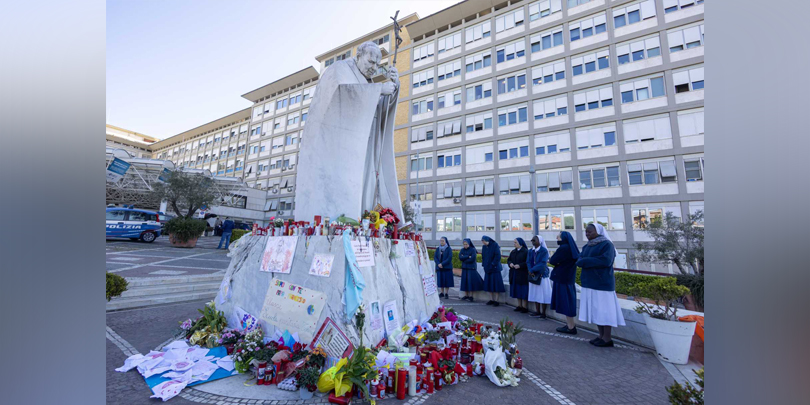
Two significant anniversaries arrived for the Church and the world in recent weeks – the 20th anniversary of St John Paul II’s death and the 30th anniversary of his Evangelium Vitae encyclical, Anna Krohn writes. Source: The Catholic Weekly.
April 2 marked the 20th anniversary of the death of the now-sainted Pope John Paul II.
Over the past months, the secular and religious media has unwittingly but fittingly kept a visual reminder of St John Paul II’s witness to human dignity in the face of debility and illness.
During Pope Francis’ long hospitalisation and illness, images of the striking statue of St John Paul II, which stands outside the Gemelli Hospital, have been repeatedly shown.
The sculpture, by Tuscan Stefano Pierotti, captures the elderly former pope, bent and suffering with Parkinson’s disease, forging strongly ahead with his crozier as if against a powerful wind.
The second notable and related anniversary, marked on this year’s Solemnity of the Annunciation, is 30 years since the promulgation of the former pope’s landmark document, the encyclical letter Evangelium Vitae (The Gospel of Life).
The encyclical is vast in scope and size and an undaunted statement about the inviolability of human life and dignity, much like the statue.
It covers four major chapters, 105 paragraphs and more than 45,000 words. The document breaks new ground by being a papal one-stop “bioethical” teaching document drawing together biblical narrative and sources, Catholic moral theology, and John Paul II’s original synthesis of social teaching and his sense of the providential interplay of grace, revelation and human decisions in culture.
It offers a unique “theo-dramatic” reading of fraught personal and social issues and is a showcase of the Church’s response to the value and the threats to human life. In the Church’s eyes these include not only intentional killing and murder, but slavery, violence, war, deportation and prostitution.
The document is one of John Paul II’s major teaching documents and yet it is designed for all readers of “good will” who care about human dignity and its centrality in defending the common good – over and above any particular political system.
In a timely reminder, given the forthcoming federal elections, John Paul II writes that democracy, while important, cannot stand without its foundation in the sanctity of life:
“Democracy cannot be idolised to the point of making it a substitute for morality or a panacea for immorality”.
Anna Krohn is the Executive Director of The Thomas More Centre and the Convenor of the Anima Women’s Network.
FULL STORY
Celebrating 30 years of ground-breaking teaching on human life (By Anna Krohn, The Catholic Weekly)






